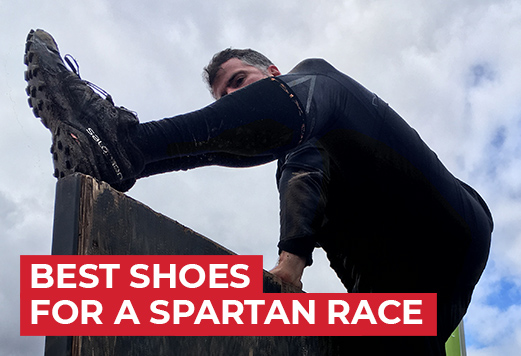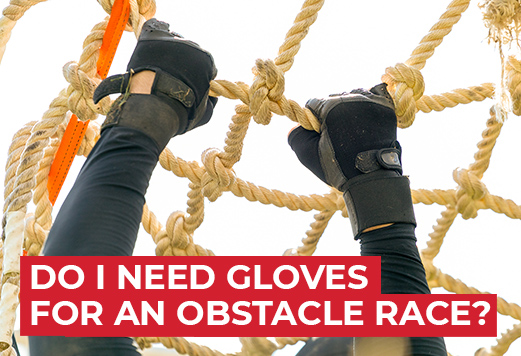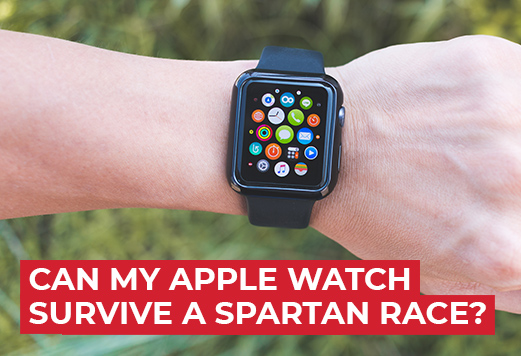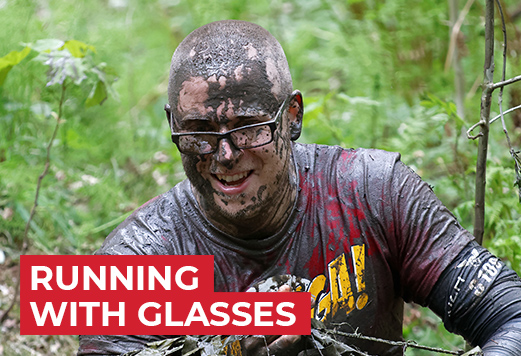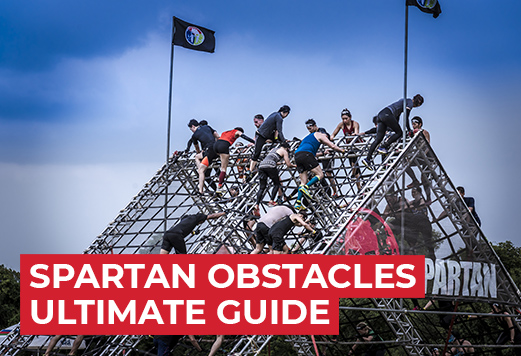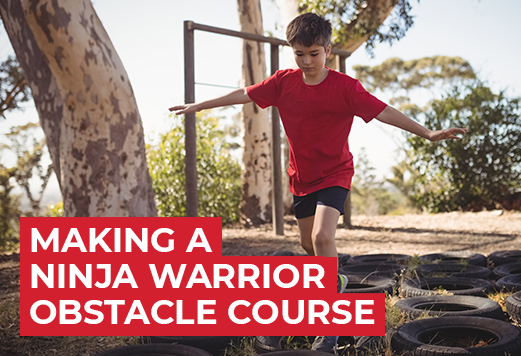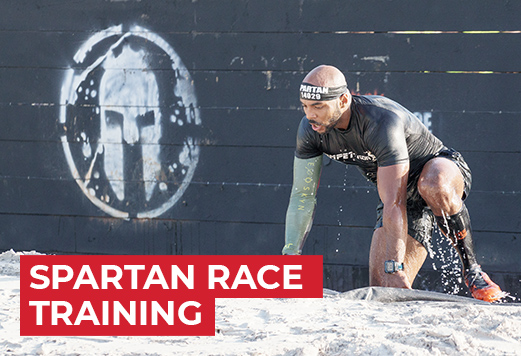The Most Helpful Gear You Should Bring to an Obstacle Race
When getting ready for an obstacle race or mud run, use this complete packing list I created, and you will be sure to bring everything you need for the race.
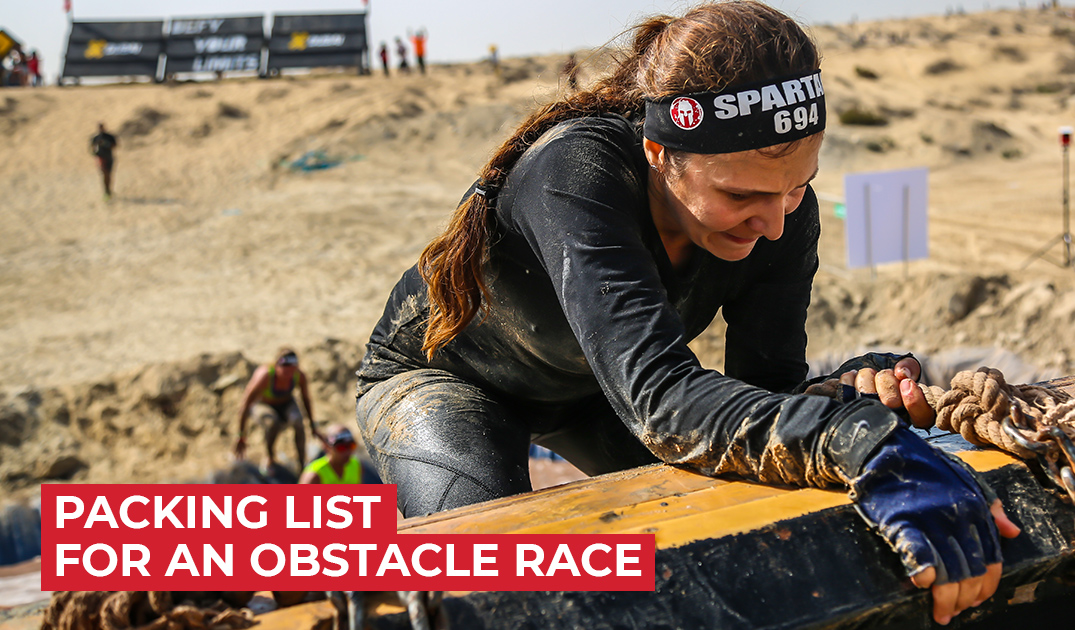

Getting prepared for an obstacle races is one my favorite moment. Just like packing up for a vacation, you must bring only the essentials and not forget something important.
I know the feeling of wondering if you forget something. Plus, I had races where I actually forgot something important. I always feel anxious when I have a run coming up, and getting prepared is part of the solution.
If you fear to forget something important, use this checklist I created.
This is the list of what I bring to all races. Over the past years, I have run all types of obstacle races and mud runs. I have tested all kind of weather, rain, sun, snow, wind, etc. Every time I run, I use more than 95% of all the following items. The other 5% have become handy at some point. I always want to be prepared for any situation. I just bring me the peace of mind I need to put my head a 100% in the race.
Before we start going over the list, you must understand that some items are useful before, during and after the race. I will also share tips that will save you time and make sure you have a blast.
- Registration confirmation
- Cash for parking
- Food and water
- Anti-chafing cream
- Kinetic tape
- Bug repellent
- Sunscreen
- Shoes
- Sport clothing
- Energy food
- Salt tablets
- Glasses and contact lenses
- Headwear
- Hydration pack
- Gloves
- Band-aid
- Knees and elbows pads
- Ziplock baggies
- Camera
- GPS watch
- Change of clothes
- Clean shoes
- Flip flops
- Towel
- DryRobe
- DryBag
- Post-race snack
- Extra water
- First-aid kit
- Deodorant
- Eco-friendly soap bar
If you want to know what to wear at an obstacle race and expecting to find a real review from a real runner. Check out my clothing checklist.
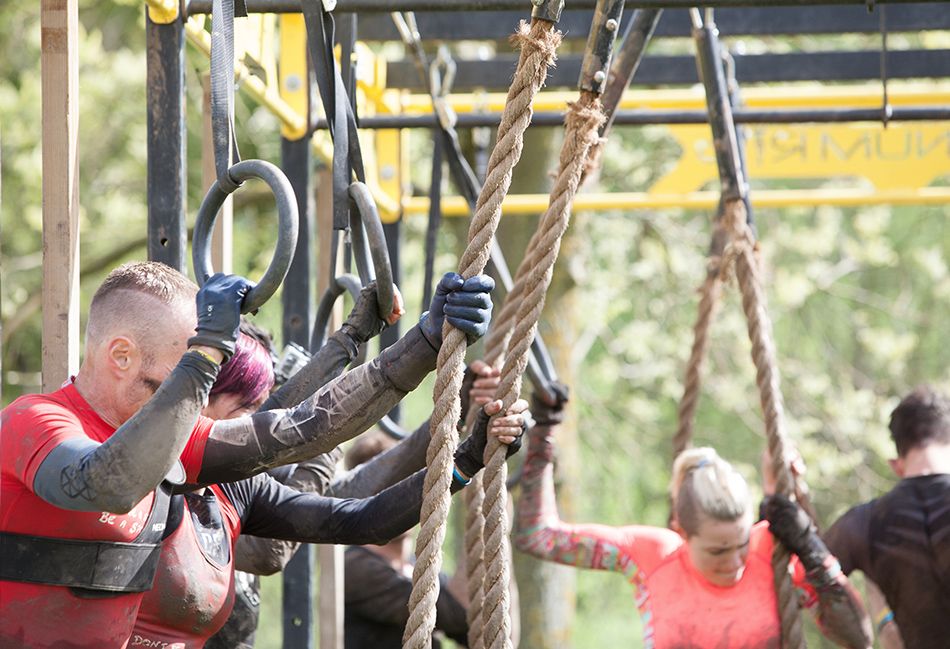
What do I need before the race?
Make sure to pack the following items and have them with you when you arrive on the event site. They are essentials to get into the race.
1. Registration confirmation
The first thing you need to do when you arrive on site is visiting the registration booth. Therefore, you'll need the registration confirmation to claim your race bib.
When you registered for the event, those details were sent by email, along with the payment confirmation. Spartan Race does thing differently, and they send a separate email, weeks before the race.
However, even if they accept the electronic confirmation on your smartphone, I always recommended bringing a printed copy of the confirmation. Just in case your phone is out of battery, or you don't have access to your email.
Bottom line, you can't run without your registration proof.
Photo ID
Along with the registration confirmation, you'll be asked to show a photo ID to confirm your identity. Since the payment was made online, it's the only proof you paid for the ticket, and you are not trying to race under someone else name.
If for some reasons you don't have a photo ID, you could try showing your Facebook or LinkedIn profile picture. But if there's no internet connection, your screwed.
Signed race waiver
It's a smart idea to download and signed the race waiver in advance. Otherwise, you'll need to do it at the registration tent, and the waiting line can be endless. Take my advise and bring your signed race waiver to the race.
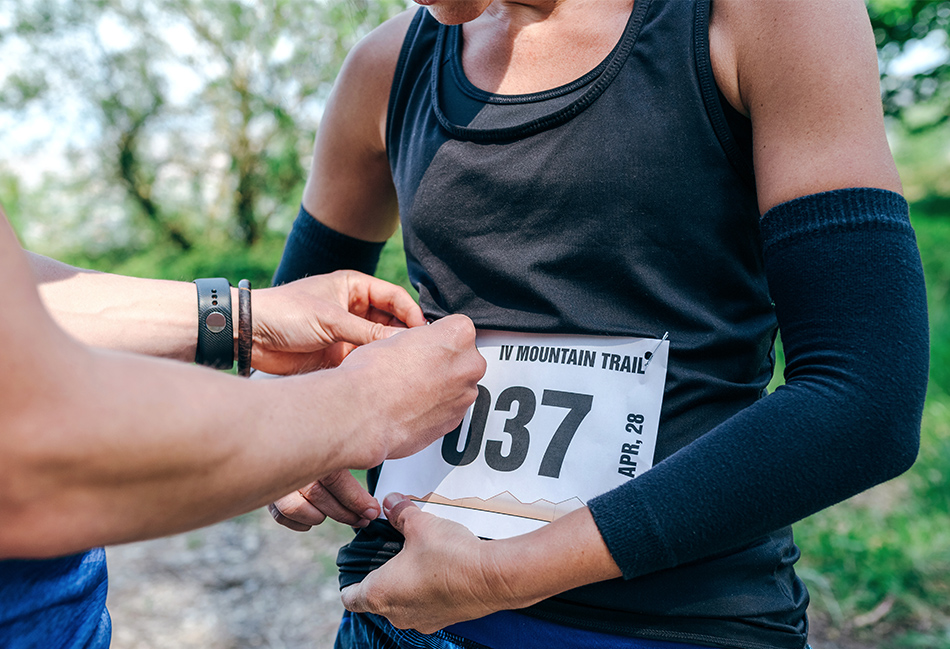
Race Bib
Maybe you already receive the race bib by mail or in-person the night before the race. If it's the case, don't forget to bring the race bib and 4 safety pins to fix it to your shirt.
2. Cash for parking
Parking is never free, and you must pay cash at the gate, so bring enough money (usually between $10 and $20).
Also, don't expect an ATM on site and take enough cash for food and drinks during the post-race festivities.
3. Food and water
Food and water are crucial, and all the training you did in the past weeks could be useless if you don't eat properly and drink enough water before the race.
Make sure you are well hydrated before the event. You should start to drink your recommended daily water, 2 or 3 days before the race (Men = 125oz and women = 90 oz per day). I also recommend staying away from coffee on the morning of the race or at least make sure you drink enough water after your coffee.
Eating the right food before the race is critical. Make sure to includes loads of protein and carbohydrates in your meals, to get the energy you need. On the other hand, only eat foods that sit well in your stomach, because you don't need to disrupt your digestion immediately before the race. Toilet are rare during the run, so make sure you don't need them after the starting line.
The day before the race, you should begin to store energy by eating brown rice or wholegrain pasta, with chicken or fish. As for the morning before the race, make sure to eat a healthy breakfast compose of; milk, almond, greek yogurt, banana, whole grain bagel, eggs, or any source of good proteins and carbs.
You need enough fuel in the tank to conquer the race.
4. Anti-chafing cream
An anti-chafing cream can make the difference between a memorable experience and a terrible nightmare.
Your clothes will be wet and probably covered with mud during the race. The perfect combination irritation, and blisters, due to skin friction. The cream will prevent such chafing.
Almost every pro athletes use anti-chafing lotion on their toes, ankles and between there tighs.
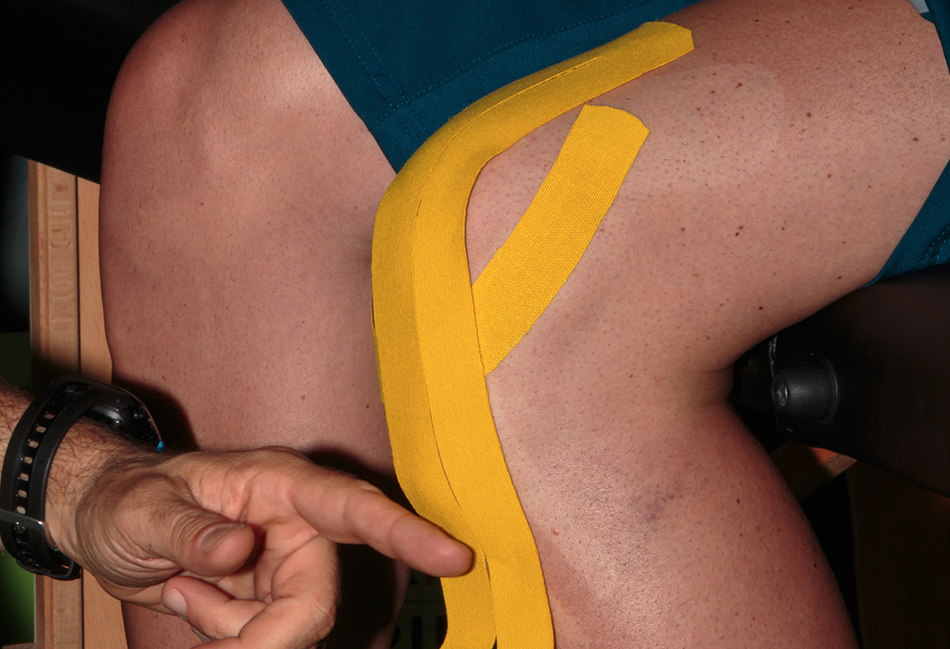
5. Kinetic tape
Kinetic tapes will be helpful with muscles and joints limitations. The tape is applied on the skin, like a giant band-aid. It provides stability, by supporting the skin from sored or injured tissues, which is improving blood flow and lymphatic drainage without limiting the range of motion.
The Kinetic tape is an excellent solution if you have discomfort and pain in your knees, elbows or shoulders.
6. Bug repellent
Most obstacle races are held in a rural region. It's almost sure that bugs will crash the party. There's nothing like water, mud, food, and people sweat to attract loads of mosquitos.
Do your self a favor and apply bug repellent before the race.
7. Sunscreen
We all want nice weather for race day, but we must prepare accordingly. For a sunny day, I always apply sunscreen before the race, because the last thing I need during and after an obstacle race is a sunburn.
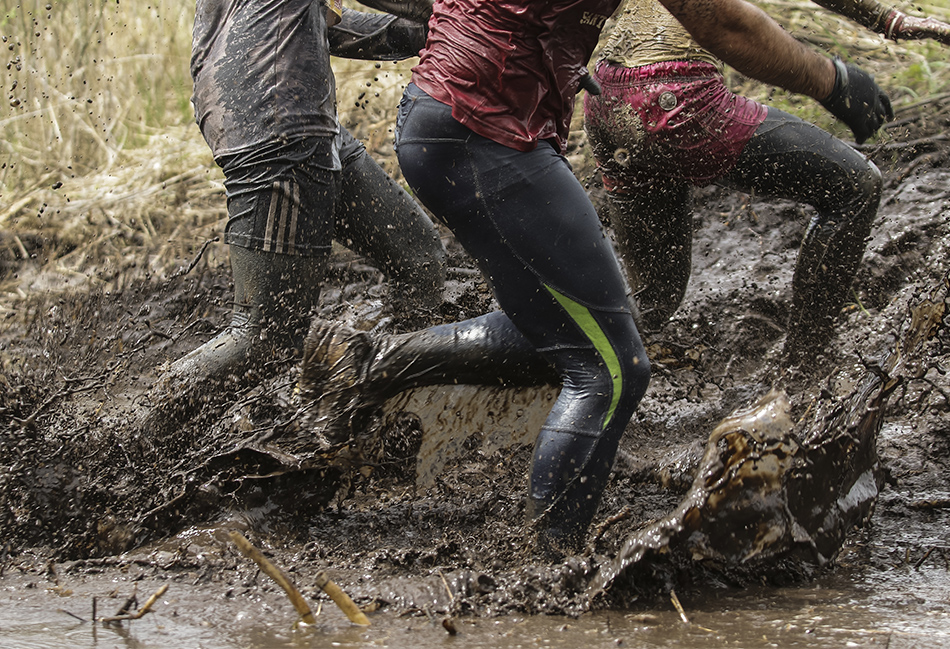
What do I need for the race?
You'll need the following gear during the race. Some items are essential, such as your shoes and clothes, but the rest can also make your experience more enjoyable.
8. Shoes
The type of shoes you wear during an obstacle race is essential. You'll need a pair of lightweight trail running shoes with an aggressive grip that gets you through the rough terrain.
Stay away from Gore-tex, since they won't be useful to keep the water from flooding your shoes after jumping in a pool of water. The waterproof fabric will hold the water inside the shoes and leave you with wet feet for the whole race. For the same reasons, you shouldn't wear regular sports shoes and always look for a shoe with enough water drainage.
The well-known trail running shoes used for obstacle racing are Innov-8 and Salamon. I have been running with Salomon Speed-Cross for the past 10 years, and I don't plan on changing. Yes, they are that good!
Finally, I recommend lacing your shoe tight enough so you won't lose them in the first mud puddle.
9. Sport clothing
For my first mud run, I knew I was about to jump in the mud and crawl in the dirt. So I decide to wear old clothes because I didn't want to ruin my outfit. That was such a rookie mistake.
First, cotton is the worst material to wear at a mud run, since it absorbs all the water, get saggy and so much irritating. I finish the race, holding my loose cargo short with both hands, my socks rolled down my ankles, and with both shoes plunged in water. Don't, make the same mistake, and wear proper sports clothing.
Look for breathable fabric that won't keep the water. Also, make sure your clothes are fit to your body so they won't get caught up the barbed wire or any other obstacles.
Furthermore, avoid pockets, since they will probably get fil with mud. The same result happens with loose clothing; the dirt accumulates inside your short or shirt and becomes a source of irritation.
The perfect outfit would be a compression top and short with sports socks and underwear.
For more information check out this article, I created on what clothes to wear an obstacle race.
10. Energy food
During the race, you'll be spending lots of energy. Therefore, it's hard to estimate how much food we need to eat before the race, especially if you are beginning with obstacle racing. In general, we burn approximately 300 calories per hours. Therefore, there's a good chance you'll start to feel fatigue halfway through the race.
This is why most runners will bring energy food such as gels, gummies, and bars. All of those will contain enough amino acids and fats to fuel your body for the rest of the race. I would advise you to stay away from process sugars and bring only the proper energy gel.
For a 3 miles (5 km) obstacle race, I would typically carry 4 or 5 energy gels. As for the longer run, I would add a protein bar with a pack of gummies. The gummies contain the same ingredient as the energy gel, but they feel and taste like a treat especially when everything in my body hurts.
11. Salt tablets
I always bring a pack of salt tablets, because I tend to have cramp during the race. The terrain and the obstacle are surprisingly demanding on legs and, many runners get leg cramp during the race.
During the race, we sweat a lot, drink tones of water and this result in flushing the essential minerals from our body.
I learn the hard way during my first Spartan Race when after 2 hours into the race, my left calf completely block while I was crossing over a wall. The pain was so intense that another runner saw me agonizing and offer a salt tablet to stop the cramp. A couple of minutes after taking the pills, the cramping stop and I was running again.
By taking salt tablets, I manage to run cramp free, and I help several other runners who are suffering. Every race I attend, I come across loads of runners fighting through leg pain.
Anticipate the cramp and pack some salt tablets for the race.
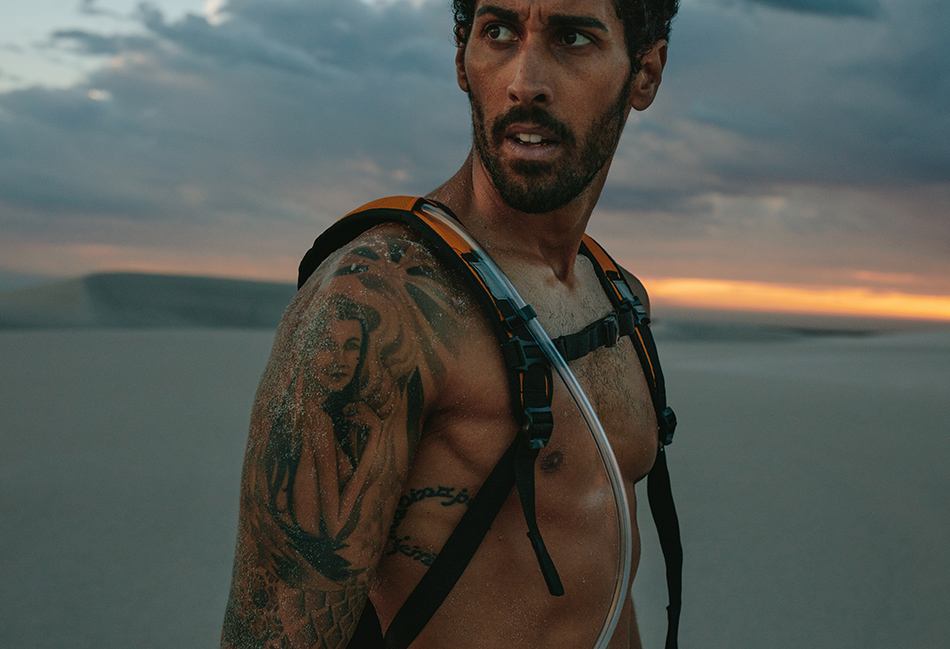
12. Hydration pack
During the race, you'll have access to water stations along the course. The problem is you never know how many water stations and how far apart they would be.
When you don't want to depend on water stations to stay hydrated, you can carry a hydration pack. Also call a camel pack or hydration backpack, this lightweight vest as an incorporated water tank with a flexible straw. The hydration pack contains enough water for the whole race, plus enough storage pocket to carry your energy food.
I suggest you add electrolytes in the water. Because if you drink too much water without adding electrolytes to your body, you'll become even more dehydrated.
I wear my hydration pack at 90% of the races I attend. The only event where I wouldn't recommend a hydration pack, are mud runs and obstacle races with swimming obstacles. In those case, the hydration vest will get soaking wet and heavier to carry. Also, the drinking straw will be covered with dirty mud and become an infection possibility.
In general, I wouldn't worry too much about the extra weight. Depending on the amount of liquid inside, it might add 6 pounds to carry. Just makes sure you get a vest made of breathable mesh fabric and with enough support. Besides, you can always take off the vest to complete some obstacles.
13. Gloves
Do you need to wear gloves for an obstacle race? Probably not, and most athletes are not using gloves. On the other hand, I can't imagine doing the rope climb or the monkey bars without gloves.
Depending on the work you do during the week, for example, if you are a mechanic or a construction worker, your hand might be more robust than mine.
However, a good pair of gloves will protect your hand from splinters and cuts, while also improving your grip. Choose gloves made of synthetic fabric that won't hold the water and dry fast. Also, they must be tight enough so they won't slide out of your hand during the race.
Forget about your gym gloves or your gardening gloves, they will fail you during the race. I've tried more than 20 types of gloves, and the one I prefer is the Fit Four with the straps around the wrists. They will get you where you need to go.
14. Glasses and contact lenses
Don't wear sunglasses unless they are prescription glasses and you're out of contact lenses. If you do need prescription glasses, like me, always wear contact lenses instead.
Glasses can easily get broken or lost during a mud run. Also, they will slide down your nose constantly while your running. If you want to protect your eye from the sun, trade the sunglasses for a running cap. If you choose to wear glasses, at least secure them with straps that wrap around the head.
For more information on glasses and obstacle racing, check out this article I wrote about wearing glasses during a mud run without looking like a newbie.
15. Headwear
Depending on the weather, you might want to wear a cap or beanie. On a sunny day, the cap will prevent you from getting blinded by the sun and falling off an obstacle or tumbling on a rock. When it's cold, wearing a hat will prevent the loss of heat from your head.
I wouldn't wear any kind of caps or beanies. Get the lightweight and adjustable version made especially for runners. This kind of headwear will shield your head and eyes, without blowing off in the wind.
16. Band-aid
Even fully clothed, some part of your body will be to potential or cuts or splinters, especially your hands.
This is why I always carry 2 or 3 band-aids in my hydration pack because during the race there's still a risk to get injured on the course. Furthermore, I don't want to interrupt my run and start searching for a first aid kit or continue running with an exposed wound.
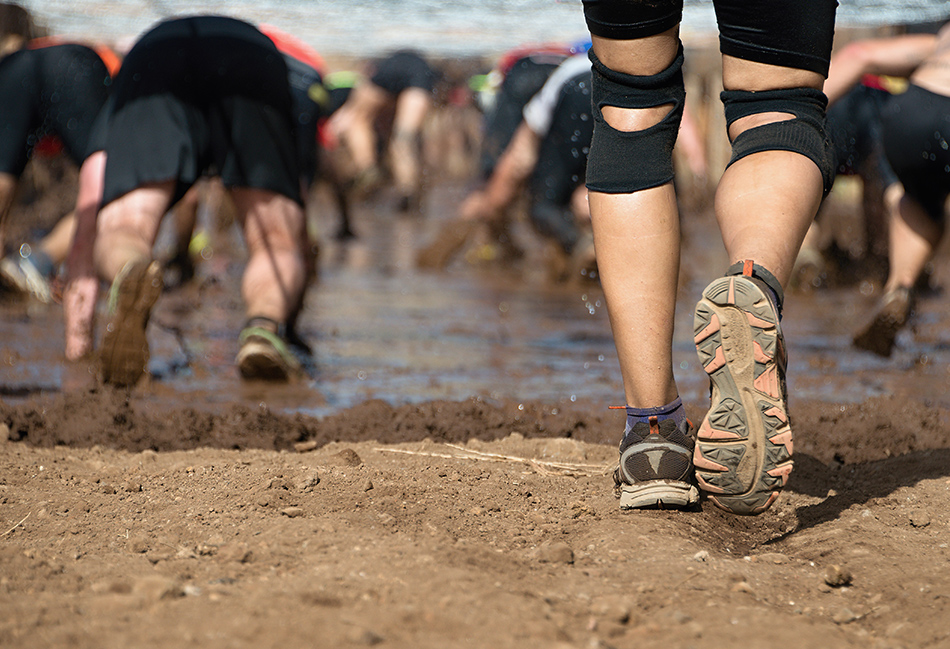
17. Knees and elbows pads
At every race, I notice people wearing pads, and I always wonder if it was their first race or they had a particular condition necessitating extra protection (ex: an injured knee).
I always wear a long sleeve compression shirt with high socks, and it's enough protection for me to complete the rope climb and the barbed wire crawl. On the other hand, I can imagine someone lightweight could need the extra padding because the course can be rough.
If you plan on wearing pads, make sure to get the right fit. I would advise looking for paddings that you slide into position (like a sleeve) and stay away from the straps. Gardening or volleyball pads, can quickly get loose and get displaced. Also, after the first mud puddle, they will become uncomfortable and heavy wet sponges. Check for paddings made of nonabsorptive materials, specially made for obstacle racing.
18. Ziplock baggies
Ziplock bags are perfect for keeping your stuff from getting soak in water during the race. Use them to store your energy bars, gels, salt tablets, and band-aid. I always separate the energy food in a different ziplock baggie, and I carry both inside my hydration pack.
I would advise you to leave all electronics or valuable in your car or at the bag check. But, if you need to bring your phone or camera batteries, make sure to store them inside a waterproof ziplock baggie.
19. Camera
Obstacle races and mud runs are all about having fun and reconnect with your inner child. You'll be testing your physical endurance while crawling in the dirt and jumping in the mud.
You'll definitely want to keep memories from this epic moment. The before and after the race pictures are the most hilarious snaps you could get.
Using your smartphone to take pictures during the race is a terrible idea. I can think of 1000 ways to get your phone broken or lost. If you want to document your run, I would suggest bringing a shockproof and waterproof camera such as the GoPro. I see lots of runners with GoPro camera fixed on the chest or the forehead. It's the ultimate sports camera to capture the whole race experience.
Don't let a silly accident ruin the day, and don't bring your iPhone into an obstacle race.
20. GPS watch
Many athletes are using a GPS watch to monitor their running pace and heart rate. With such metrics, they know if they could run faster or should slow down because they are about to have a heart attack.
A GPS smartwatch is not for everyone, because it's expensive and not really useful if you are not an active person. However, if you are getting serious about running and would like to track your progress, I suggest you check the TomTom smartwatch. I have been using this watch for 2 years, and I'm 100% satisfied. It's the ideal sports watch because it has all the essential features plus a cool design for a reasonable price.
Although if you already have a GPS smartwatch, you should wear it.
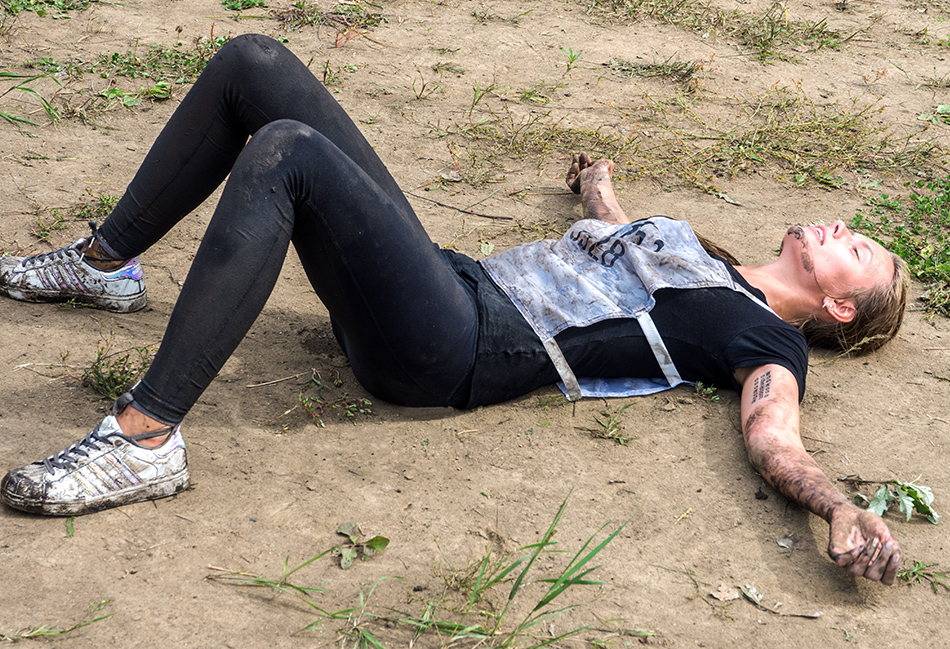
What do I need for after for the race?
You'll be glad to have access to the following gears after the race. Those items can stay in the car, or you could leave them at the bag check. Most event will have a bag check station for the runners. I prefer to keep everything in my car because the waiting line at the bag check can be endless. Especially when you are covered with mud and start to feel cold.
21. Change of clothes
The most valuable gears to have after the run is a dry change of clothes. During the race, you'll be crawling in mud, jumping in the water and sweating like a pig. Trust me, changing clothes will become your number one priority.
Furthermore, do you really want to hang out after the race or drive your car with dirty clothes? I don't, and that's why I always make sure to pack an extra shirt, short, underwear, and socks.
22. Clean shoes
An extra pair of shoes could be one of the worst things to forget when you're going to a mud run. After, the race your feet will be tired, and you should treat them to a dry and comfortable pair of shoes.
I would advise you to bring the most comfortable sneakers.
23. Flip flops
While visiting the shower station, you'll want to take off your running shoes to rinse them properly. The ground will be soaking in water, fill with mud and rocks. At this particular moment, a pair of flip-flop become a lifesaver because there's a great chance to get your bare feet injured.
24. Towel
You definitely need to bring a towel. After the race, you'll crave to go straight to the shower to rinse off the mud and change clothes.
I have never attended an obstacle race where they had changing rooms so I would suggest you bring a towel large enough to cover your self will you change in the parking lots.
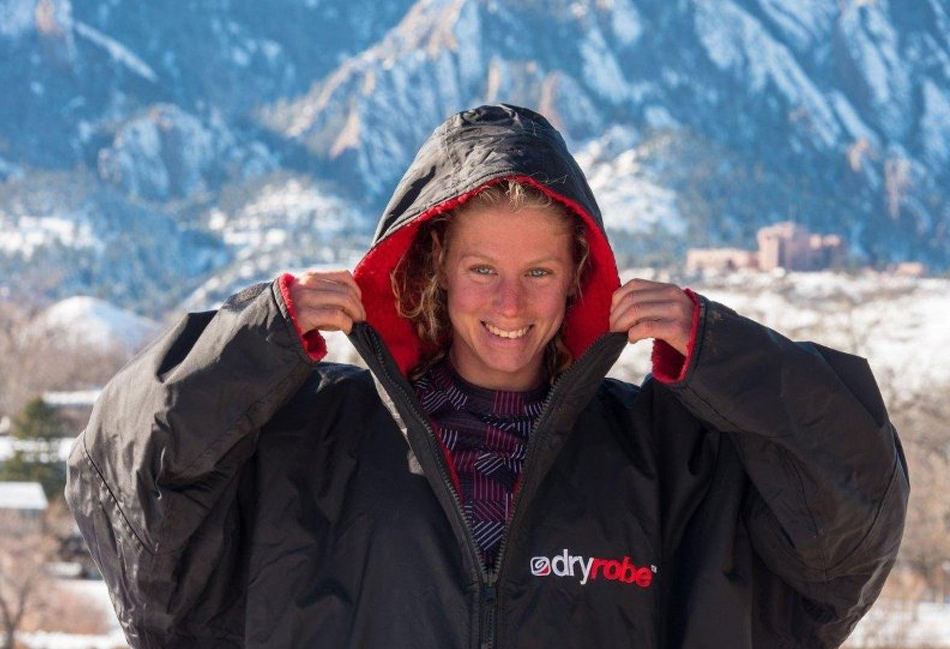
25. DryRobe
I have discovered the DryRobe during an ultra marathon event. Some runners were wearing long robes with hoodies, and it looks so comfortable. Especially compared to me, who was rolled-up into a sleeping bag, and fighting the cold October temperature.
Now, I would never attend an obstacle race without one. I also figure that I could use it for many other outdoor activities, such as camping, surfing, trail running, kayaking, etc.
The waterproof material on the outside with the soft fleece lining on the inside will automatically get you warm and protected from the cold and the rain.
26. Dry Bag
After, changing clothes, you need a solution to bring back the muddy and wet gears from the race. Just chucking them into your car is a terrible idea. Your best option is the stuff everything into a dry bag, specially made to carry wet clothing.
A Dry Bag is waterproof, and won't leak into your back seat. If you plan to attend multiple races, this item will become your best friend.
Garbage Bag
If you don't want to invest in a DryBag, you can get away with garbage bags to transport your wet gear. Pro tip is to double up the bag so it won't leak murky water into your car.
27. Post-Race Snack
Even if the hamburger looks pretty delicious, it's important to treat your body with the proper post-race healthy food.
Find a well-balanced snack with lots of protein and carbs. Look for bananas, nuts, beef-jerky (the healthy one), granola bar, and greek yogourt.
After a healthy snack, you can eat whatever you want.
28. Extra water
Sure, you'll have access to clean water on site, but it's always a good idea to bring extra water in your car. You will be dehydrated from all the effort put into the race, and the most important thing is to rehydrate properly.
It's even better to bring sports drinks since they contain other ingredients that will counter the effect of dehydration. If you are not keen with the artificial sugar contained within sports drink, I suggest drinking coconut water (which is my favorite post-race rehydration drink).
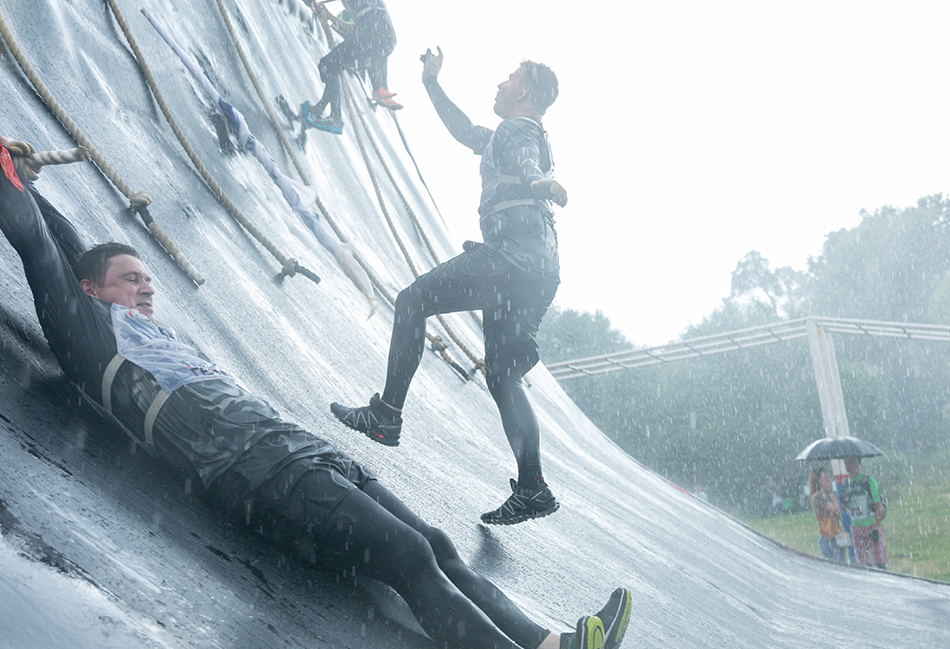
29. First-aid kit
Obstacle races are rough, and it's not rare to bump into a tree or slide into gravels. Chances are that you will only notice the scratches and cuts just after changing clothes. Even, if every obstacle races and mud runs have medical aid stations, it can be useful to have a first-aid kit in your car.
You don't need a full kit but just enough band-aids, alcohol pads and maybe a bottle of hydrogen peroxide. The previous items are especially important if you get a cut during a mud run and you want to prevent infection due to bacteria in the mud.
30. Deodorant
Sweating during an obstacle race is inevitable, and deodorant will become handy, especially if you plan to attend the post-race festivities.
31. Eco-friendly soap bar
After crossing the finish line and receiving the medal, you'll definitely want to hit the closest shower station. You'll be covered with mud, and you never know what's into the dirt (manure, bacteria, and possible infections).
Sure you could just rinse the mud and hope for the best. But you should take the extra precaution and use soap, especially if you plan on eating after the race.
Please, don't just bring "any kind" of soap, only use eco-friendly soap made for the outdoors. You ordinary soap can disturb nature and harm the animals. It a matter of respecting the environment.
Conclusion
I recommend you to gather all the gears, 24h before the race. That will give enough time to find a solution if you're missing some pieces. Also, you could easily forget something on the morning of the race, because of anxiety or stress.
Now make sure you get your training right and be physically prepared for the race.
Finally, share this article with your race buddies, so they know precisely what to pack.
P.S. If you want to know what to wear at an obstacle race and hoping to get genuine advice from a real runner. You should check out this my clothing checklist.
I have hand picked this racing gear because I'd used each item in different obstacle races and mud runs. Plus, I'd confirmed my selection with my fellow OCR runners. With all their insights and my own experience, I've built this list of the most helpful gear to bring at an obstacle race.
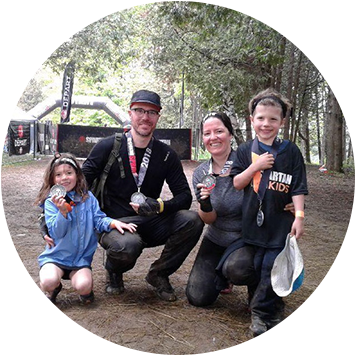
Thank you for reading!
Hi, I'm the Obstacle Ninja, and I will share with you my tips on how to crush it at your next obstacle racing. Also, how to get your little ninja more active with obstacle course. Want to know more about me? Read my story!

Hi, I'm the Obstacle Ninja, and my passion is OCR (obstacle course running).
My idea of the perfect weekend is to run a Spartan Race or Tough Mudder with my family. We love to run in the mud and challenge your self with the obstacle. My kids and I, we love to watch Ninja warrior and train for our next obstacle race or mud run.
I will share with you my tips on how to crush it at your next obstacle racing. Also, how to get your little ninja more active with obstacle course.
Want to know more about me?
Read my story!
Got questions? Contact me!
